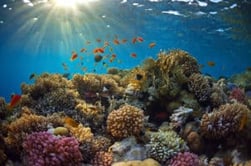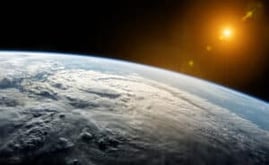Science Reading Comprehension - Engaging Reading Passages for Middle School Science
Reading in Science
One of the challenges I had in my middle school science classes was to find engaging reading passages for my students. I would spend my prep period looking for interesting articles but came up empty most of the time.
I created the science reading comprehension resource to fill the gap with fun science articles that students would enjoy reading.
Why Should You Integrate Reading Into Your Science Curriculum?
Many middle school students struggle with reading comprehension at their age. When I was in middle school, I had a heck of a time reading an article and then comprehending what I had just read.
It’s no secret the more you practice this skill, the better you become at it, but it often gets overlooked in the science class. Reading comprehension is such a crucial skill for students. Textual analysis unlocks their ability to understand information in the future. You’re doing your students a huge favor by integrating informational reading into your curriculum.
What’s Included In The Science Reading Comprehension Resource?
The full bundle comes with 40 reading passages and includes all of the features listed below.
- The science passages are appropriate for grades 6 – 8 middle school (and higher-level 5th graders).
- Lexile levels: 1100-1300 (2 leveled articles for each topic)
- Each science article has corresponding questions and a mini-activity.
- There are typically 5-7 questions for each reading passage.
- The mini-projects are hands-on and interactive.
- Students can annotate the text with highlights, underlines, circles, and stars to identify their answers in the informational text and improve critical thinking skills.
- Cornell notes template included for students if needed.
- Detailed student directions are included on the activity page.
- Engaging, colorful graphics that can easily be printed in grayscale.
The science reading passages now include files for your remote learning environments such as Google Classroom. Each article now includes:
- Online Student Answer Sheet (using Google Forms) for every reading passage
- Distance learning directions PPT and video tutorial
- PDF of each on-level reading passage without the answer key (can be sent to students)
- PDF of each modified-level reading passage without the answer key (can be sent to students)
- PDF of Student Answer Sheet (can be sent to students) for use with PDF editors when Google Forms aren’t allowed
How Could You Use Science Reading Passages In Your Classroom?
This is where the reading passages shine. They are versatile and can be used in a myriad of ways. Here are a few of the ways I would use the articles in class:
- Whole-Class Instruction – The reading passages can be integrated into your current unit and be used with your whole class to enhance the topic you’re covering.
- Sub Plans – Are you ever absent from school? These articles are perfect for you. I would print out a few class sets and leave them in your desk for a sub. You’ll never have to worry about planning when you’re sick again.
- ISS or Detention – The stress of getting to school and seeing an email that you need to send work down to ISS for six students can be overwhelming. The reading passages are a quick win when you’re put into a bind. Print them out and send them down. If you’re a 1:1 school, you can also assign the science articles to them in your LMS.
- Absent or Missing Work – In science, it’s sometimes a challenge to have students make up a demo or lab that they missed. The reading passages are great to supplement for any missed work.
Interesting Science Articles for Students
The science articles you assign to your students don’t have to be boring. Below is the comprehensive list of all the articles included in the Science Reading Comprehension Bundle. Each are also available for purchase separately.
- Acoustical Instruments – Students study the properties of sound by reading a nonfiction article about acoustical instruments. They then complete comprehension questions and create their own percussion instrument using common household items.
- Aurora Borealis – Students study auroras by reading a nonfiction article about the relationship between the magnetosphere and sunspot activity. They then complete comprehension questions and create a travel brochure for the northern lights.
- Autonomous Vehicles – Students study autonomous (self-driving) vehicles by reading a nonfiction article about this new form of transportation. They then complete comprehension questions and design their own autonomous vehicle for a competition.
- Bay of Fundy – Students study the Bay of Fundy by reading a nonfiction article about this natural wonder of the world. They then complete comprehension questions and design a pamphlet for a school field trip to investigate the bay.
- Becoming an Astronaut – Students study astronauts by reading a nonfiction article about the effects humans experience on extended visits to space. They then complete comprehension questions and design a brochure for their own space camp.
- Can You Hear Me Now? – Students study hearing by reading a nonfiction article about the workings of the human ear. They then complete comprehension questions and create an interactive adult coloring sheet of several components of the human ear.
- Cave Food Pyramids – Students study food pyramids in caves by reading a nonfiction article about the fascinating organisms that live inside a cave. They then complete comprehension questions and create a 3D version of a cave food pyramid.
- Childhood Obesity – Students study childhood obesity by reading a nonfiction article about food choices and exercise. They then complete comprehension questions and use nutritional facts to design a healthy food and drink vending machine.
- Cloning Extinct Species – Students study cloning by reading a nonfiction article about woolly mammoths. They then complete comprehension questions, create a Venn diagram about cloning, and write a persuasive essay about cloning and society.
- Creatures from the Deep – Students study deep-sea animals by reading a nonfiction article about deep-sea life and marine explorers. They then complete comprehension questions, invent their own deep-sea animal, draw a sketch, and write about it.
- Dinosaur Sue – Students study Dinosaur Sue by reading a nonfiction article about her discovery and journey to her current home. They then complete comprehension questions and write a career research essay on the Black Hill Institute.
- Electric Cars – Students study electric cars by reading a nonfiction article about the advantages and disadvantages of this technology. They then complete comprehension questions and map out a route for a road trip in an electric car.
- Exoplanet Hunter – Students study the exoplanets by reading a nonfiction article about the Kepler Space Telescope and discovering distant objects in space.They then complete comprehension questions and create a test based on the solar system.
- Exotic Animals – Students study exotic animals by reading a nonfiction article about the dangers of keeping them as pets. They then complete comprehension questions and create a poster on their stance on the purchase of wild animals.
- Flying High – Students study hot-air balloons by reading a nonfiction article about the principles and design elements that make them work. They then complete comprehension questions and design their own unique hot-air balloon.
- Forensic Science – Students study forensic science by reading a nonfiction article about processes used to solve crimes. They then complete comprehension questions, create a movie plot, choose their cast, and design a billboard poster for it.
- Fossil Formation – Students study fossils by reading a nonfiction article about paleontology and three ways fossils are formed. They then complete comprehension questions and create a teaching activity for their class about an extinct animal.
- GMOs – Students study genetically modified organisms (GMOs) by reading a nonfiction article about their benefits and issues. They then complete comprehension questions and design an organic farm-to-table menu for a local restaurant.
- Hawaiian Hot Spots – Students study hot-spot volcanoes by reading a nonfiction article about the Hawaiian Islands. They then complete comprehension questions, create instructions for building three volcanoes, and write a short synopsis.
- Hurricane Harvey – Students study heroic acts during natural disasters by reading a nonfiction article about when Hurricane Harvey hit Houston. They then complete comprehension questions, design a fundraiser, and create a poster for it.
- Inherited Traits – Students study inherited traits by reading a nonfiction article about phenotypes, genotypes, and DNA. They then complete comprehension questions and create an imaginary family tree to trace traits through three generations.
- Inmate Firefighters – Students study inmate firefighters by reading a nonfiction article about a program in California. They then complete comprehension questions and write a letter to local government lobbying their position on using inmates.
- Keep Austin Batty – Students study bats by reading a nonfiction article about the Mexican free-tailed bat population in Austin, Texas. They then complete comprehension questions and create a presentation on a species of bats.
- Killer Whales – Students study animal cooperation by reading a nonfiction article about killer whale pods. They then complete comprehension questions, recall a time when they worked as a team, and create a teamwork challenge.
- Life Cycle of Salmon – Students study salmon by reading a nonfiction article about the stages of their life cycle. They then complete comprehension questions and create a detailed diagram of a salmon’s life cycle for a textbook company.
- Mapping the Ocean Floor – Students study oceanography by reading a nonfiction article about the challenges of mapping the ocean floor. They then complete comprehension questions and predict what might found on the ocean’s floor in the future.
- Mars: The New Frontier – Students study Mars by reading a nonfiction article about the challenges faced by humans exploring or living on Mars. They then complete comprehension questions and design a house suitable for living on Mars.
- Microhabitats – Students study microhabitats by reading a nonfiction article about fascinating microhabitats found in a forest. They then complete comprehension questions and document, sketch, and analyze a nearby microhabitat.
- Monarch Butterflies – Students study monarch butterflies by reading a nonfiction article about their life cycle and migration. They then complete comprehension questions and create an adult coloring sheet of the monarch lifecycle.
- Neil DeGrasse Tyson – Students study Neil DeGrasse Tyson by reading a nonfiction article about his life and accomplishments. They then complete comprehension questions, choose another scientist, and write their own biography.
- Rainforest Medicines – Students study the rainforest by reading a nonfiction article about its medicinal plants. They then complete comprehension questions and write a letter to the government about the importance of rainforest protection.
- Super Athletes – Students study super athletes by reading a nonfiction article about their common physical characteristics. They then complete comprehension questions and write interview questions to ask their favorite athlete.
- Surviving Lightning – Students study lightning by reading a nonfiction article about surviving a lightning strike. They then complete comprehension questions and design a community recreation area for a location with frequent lightning strikes.
- The Power of Likes – Students study the effects of social media by reading a nonfiction article about Pavlov’s conditioned stimulus concept. They then complete comprehension questions and design a new social media app for Apple.
- Use it or Lose It – Students study neurochemicals in the brain by reading a nonfiction article about neuroplasticity. They then complete comprehension questions and create an activity that promotes the release of positive neurochemicals.
- Water Pollution – Students study the Great Lakes by reading a nonfiction article about water pollution. They then complete comprehension questions, research and summarize the Great Lakes Water Quality Agreement, and create a short quiz.
- Where Does Your Trash Go? – Students study where trash goes by reading a nonfiction article about the process of building landfills. They then complete comprehension questions, research local recycling programs, and brainstorm how they can reduce waste.
-
Where Does Your Water Come From? – Students study where water comes from by reading a nonfiction article about the hydrologic (water) cycle. They then complete comprehension questions and create a public service announcement on keeping our water clean.
-
Yellowstone – Students study volcanoes by reading a nonfiction article about the geologic activity of Yellowstone National Park. They then complete comprehension questions and create a virtual tour presentation of a national park.
-
Zombie Brains – Students study the human brain by reading a nonfiction article about two neuroscientists and their research on zombie brains. They then complete comprehension questions and write a career research paper on neuroscientists.
These 40 science articles can be implemented in your classroom starting tomorrow.
Purchase the science reading comprehension bundle or individual articles here.
Download Over $100 in FREE Resources
For Middle School Science
Simply create a login below and gain immediate access to a selection of our Kesler Science product line worth $100 - for FREE. There's a full version of every product type! You'll also join tens of thousands of middle school science teachers who receive timely tips and strategies straight to their inbox.




